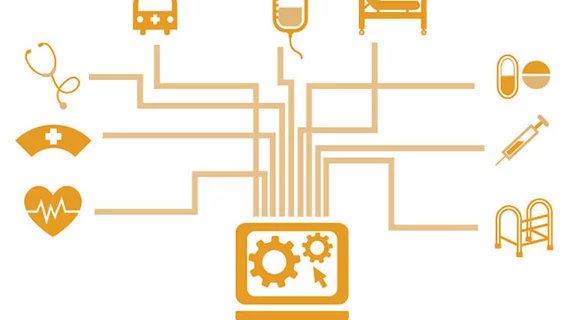Global EHR market expected to hit nearly $40B by 2022
Cerner owns 17.3 percent of the $29.7 billion global electronic health record (EHR) market, according to the annual Kalorama Information market share report, though No. 2 Epic leads the market for smaller hospitals and physician practices.
The new report also indicates a shift at the top of the market. Last year’s No. 2, McKesson, is off the list after selling its IT business to Allscripts in October 2017, allowing Allscripts to move up one spot to No. 3 in market share. GE Healthcare rounded out the top four.
Cerner maintained the top position with revenues of $5.1 billion in 2017, with Kalorama citing its CernerITWorks and CernerRevWorks platform as drivers of new business. Epic’s 8.8 percent market share includes being the vendor for Kaiser Permanente, capturing a greater share of new business than rivals in the market as well as leading among the more competitive physician office EHR segment.
“There are many EMR providers, so it's important to look at where they operate,” said report author Mary Anne Crandall. “In the competition for large healthcare systems, it's the Top Four EMR companies mainly participating with some exceptions. If you focus on small hospitals, you've got Cerner and Epic but also MEDITECH is a factor. When it's physician practices, you see Epic and Allscripts but also NextGen, athenahealth, eClinicalWorks, NueMD—a lot of competitors.”
The report predicted Epic’s market share will continue to grow, saying it has “one of the most complete enterprise EHRs with an excellent record of accomplishment.”
While the EHR market was worth $29.7 billion in 2017, growth has slowed down. Consolidation has simultaneously sped up with a 15 percent jump in mergers and acquisitions activity over the past year. The report said growth in the near future will be driven by adoption and upgrading activities with the market’s worth expected to hit nearly $40 billion by 2022.
“In terms of growth, the ride is not over,” the report said. “Expect growth this year and next (5 to 10 percent) and stable growth until 2022. Eventually, there will be market saturation, but this is a bit of a way off, especially in emerging markets.”

